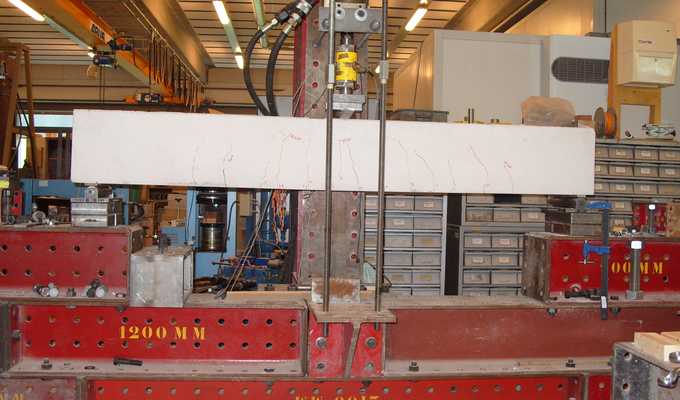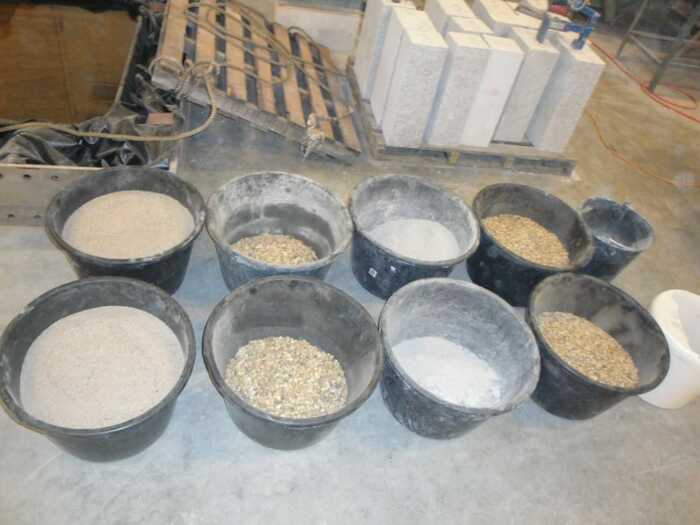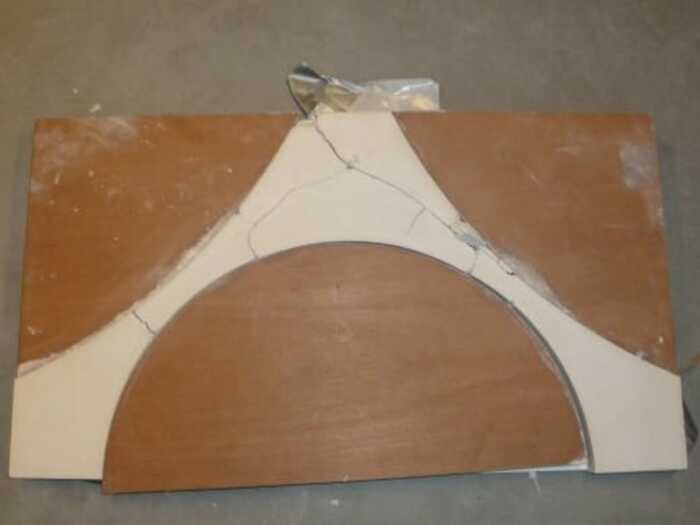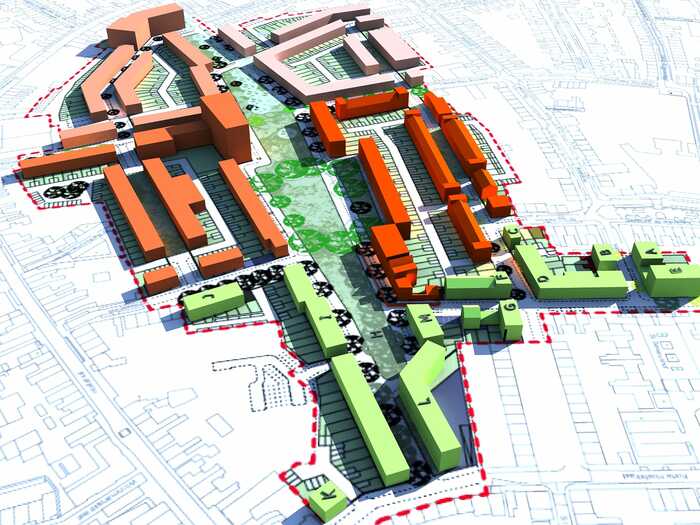
Into Practice
Besides research, it is very important that projects are put into practice. Students can get familiar with the building practice by following several courses. The courses followed by me were Workshop Manufacturing, Innovation on Location and my Masterproject 2.
Workshop Manufactering
The first course on the TU/e where concepts and designs are put into practice was Workshop Manufacturing. In this course several studies are done on the characteristics of concrete and gypsum. The first assignment was to realize a concrete beam. Before we realized the beam, we realized 9 concrete cubes of which the ideal proportions were determine. These cubes we made in two sessions. After this the cubes were tested on pressure, this was done per 3 cubes after 7, 14 and 28 days. The results showed the difference between the two sessions and the days before the pressure test.
The next step was to determine the reinforcing steel needed in the beam, to calculate this, mechanica had to be applied. After this the mold for the beam was made and the reinforcing steel was placed into the mold with distance keepers. To determine the proportions of water, cement, lime, sand and gravel a new calculation was made for the beam. Then the concrete was produced and poured into the mold. After 28 days the mold is removed and the beam is tested.

The second assignment was to make a gypsum beam. Therefore we had to deseign a optimal shape and test this with a pressure test. The model was based on triangles and a reference was the bottom of the Eiffeltower. The model was made in a wooden mold and filled with gypsum. After drying for a couple of weeks the model was tested. More details can be found in the report.

Innovation on Location
Another course in which knowledge was brought into practice was Innovation on Location. This course was organized by our study association Support. They contacted several companies if they had a bottleneck on a building site that could be solved by students of the TU/e. The bottleneck that had to be solved by us was at Project Groeseind in Tilburg. This was a building site of Hurks Bouw and was seperated into three phases. Phase 1 and 3 were connected by phase 2 and this was the bottleneck for this project. Phase 2 will be realized first, after that phase 3 and 1 are realized. Because of this sequence phase 3 is disconnected from the building site after the completion of phase 2. This had to be solved, the details can be found in the report.
Report Innovation on Location
Article for SUPporter
Publication in the SUPporter

Masterproject 2: The Tensegrity Facade
For Masterproject 2 the concept designed had to realized into a full scale model for the fair: Gevel 2012. More information can be found here.